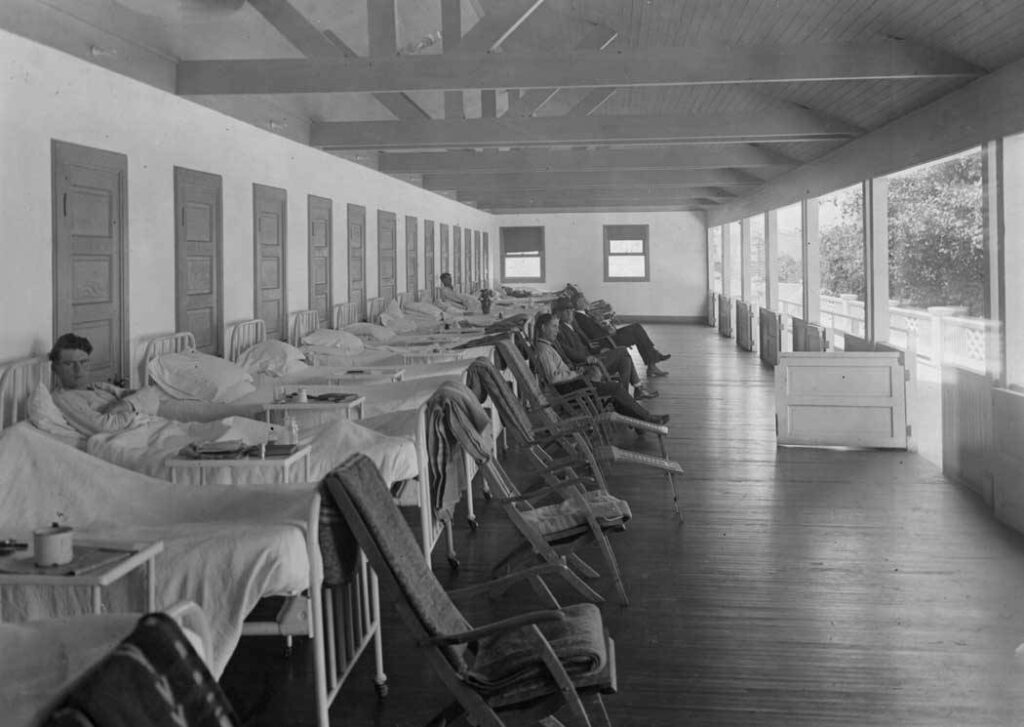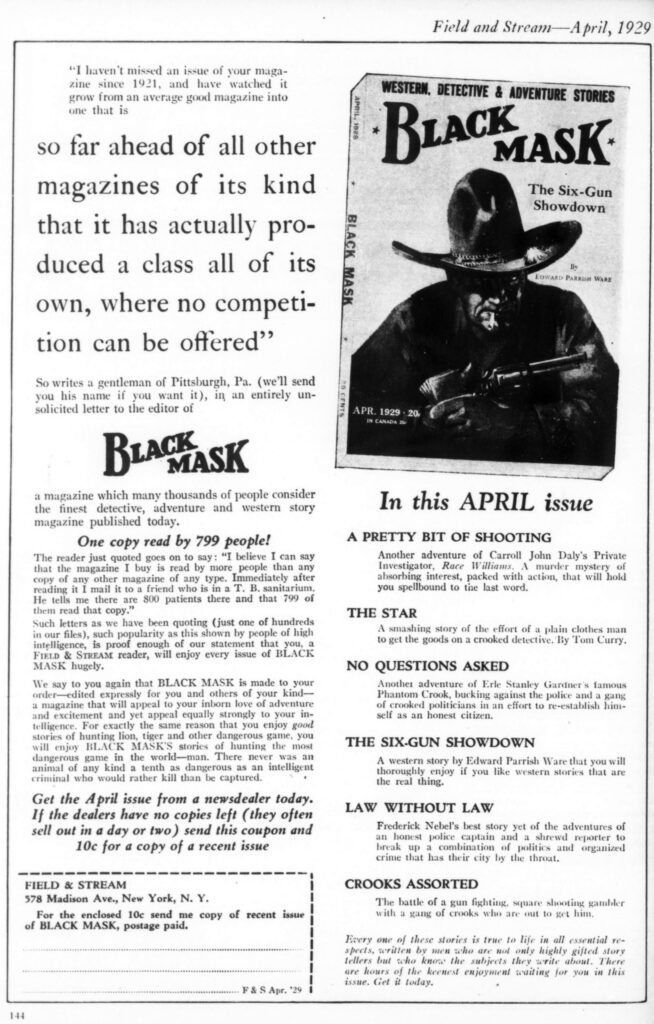Given the state of some of the pulps I’ve seen (and bought), I shouldn’t be surprised at just how many people read the pulps. And how badly they treated them.
But this has to be the record for a single issue.
I believe I can say that the magazine I buy is read by more people than any copy of any other magazine of any type. Immediately after reading it I mail it to a friend who is in a T. B. sanitarium. He tells me there are 800 patients there and that 799 of them read that copy.

From the collections of Oregon Health & Science University
Before you read on, try to guess which title it might be.
Read more: Record maximum readers for a single pulp magazine issueThe source is this ad for Black Mask in its sister magazine, Field and Stream. What i want to know is who’s that one patient out there that isn’t reading this?

Did you ever hear of anything similar? Some pulps were shipped overseas to army men and I guess a pulp on a ship would receive the same treatment. Did any other title come close or beat this?
PS: This might also explain why those 1929 issues of Black Mask are so hard to find.
If a pulp has been in a T.B. ward, I don’t think I want to have it in my collection. Not even if it’s a BLACK MASK!
How can you tell, though? Unless they stamped it.
One of my favorite novels is THE MAGIC MOUNTAIN by Thomas Mann. It takes place mainly in a TB ward. Another favorite is the Somerset Maugham novelet that has two people falling in love in a TB ward and marrying even though one of them only has a short time to live.
Since there is not much to do in such wards, reading material is very much in demand but I don’t recall any pulps being mentioned.
Too lowbrow for a Thomas Mann novel, maybe?
Pretty high percentage of patients. I am a bit skeptical that 100% of the patients were literate in that era. It wouldn’t be uncommon for some patients to have had a limited education.